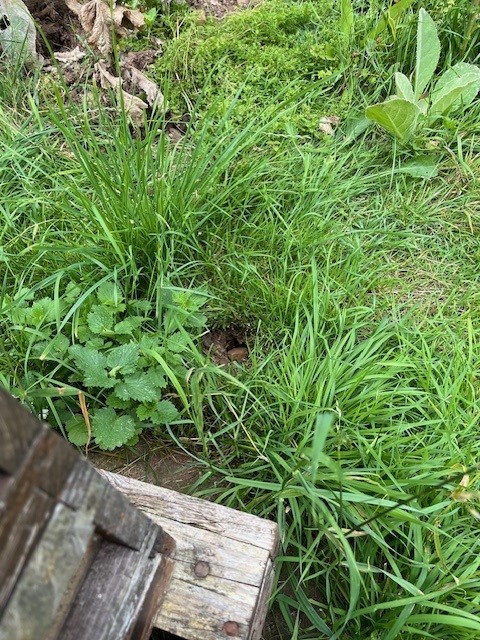Well after a cold wet start to the month somebody let the “sun” out at long last and our colonies worked the nectar flow that arrived from the BlackBerry, Lime and everything else that suddenly burst into flower.
By this time in the season my 9/10 day checks have started to falter as lifting supers full of honey, hopefully, and wearing a bee suit in the wet or heat is not a pleasant experience.
Heat of Summer:
Colonies are very good at regulating the heat and humidity in the hives we put them into so we can manage, or in some cases not, how they survive throughout the year.
In the intense heat of the summer it is a good idea to remove the Varroa slides on your floors to give them the opportunity to create a bottom draft to keep everybody cool.
Except on my Nucs I’ve removed all my mouse guards or front entrance blocks again so the bees can ‘fan’ creating an air conditioned interior to regulate the brood and ripen the nectar into honey.
The noise and smell in the Apiary as they do this is extraordinary.
But in exposed sites the sun will turn the metal roofs on the hives ‘red hot’ so a big sheet of cardboard, out of the recycling bin, (Sainsbury’s, Morrisons, Tesco, Asda just to name a few who supply these for free!) held down by a brick will help the situation.
But as ever watch the bees have not draft proofed the Varroa floor over the winter a blow lamp quickly sorted this issue .
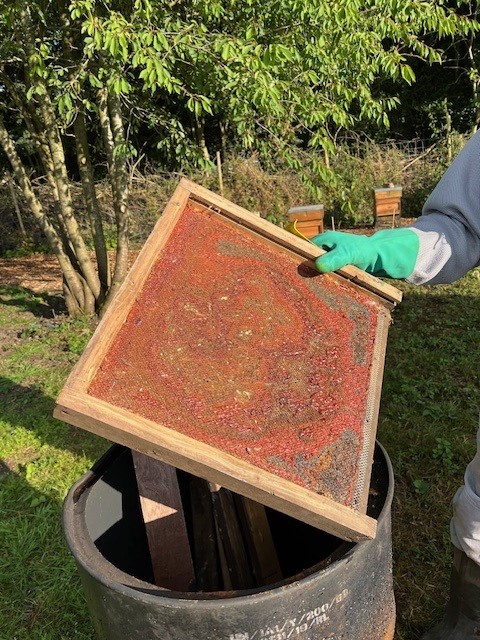
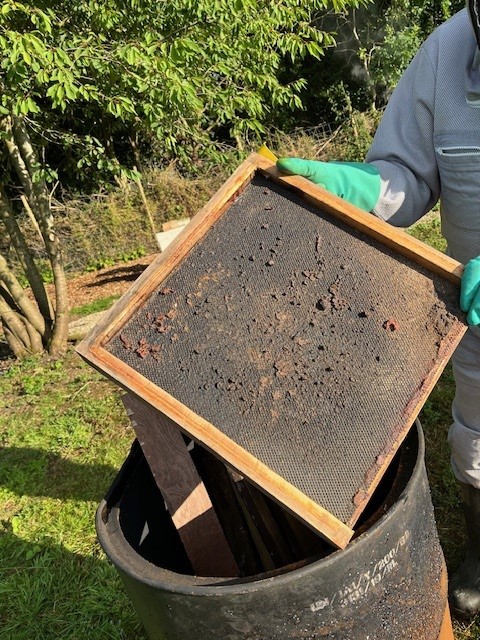
Foul Brood:
As a number of us are aware we have had outbreaks of Foul Brood in our area again resulting in the destruction of entire Apiaries resulting in some folk deciding to give up the craft, hopefully not permanently, but understandable in the circumstances.
Please be vigilant and if you have any concerns take pictures and forward them to the NBU headed by Colleen in our area.
After destruction a pit is normally dug on site and bees and frames burnt and all empty hives scorched to eradicate the disease.
Where infected Apiaries are close together one site may be used to burn all infected items so everything is bagged up and transported to a central pit. Yep it is awful to be involved in the process.
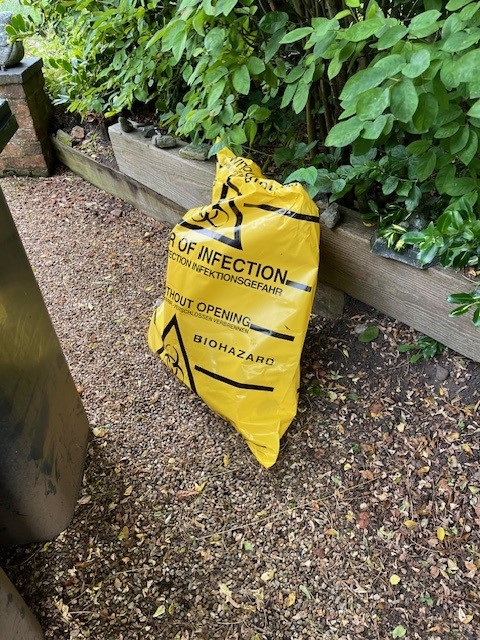
Moving Hives:
It is not an ideal time to move colonies but at times needs must.
Nationals, Smiths and within reason WBC’s are easy to move once the bees are all home for the night, strapped up and put in the back of a car or trailer .
But when it is a Long Hive only a Barrow will do!

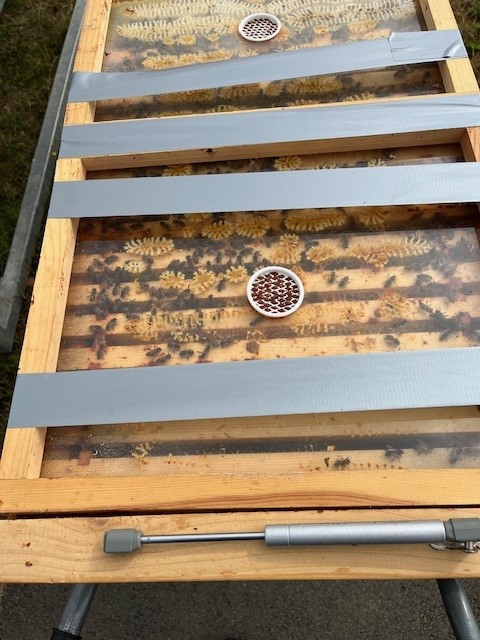
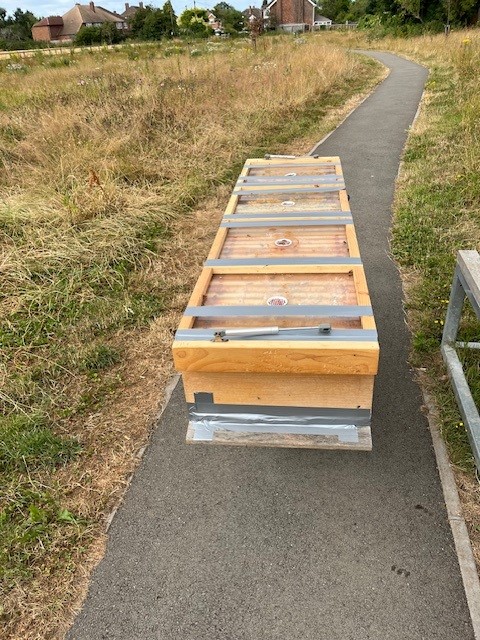
Wasps:
We will talk about wasps more next month but it is a good time to think about preparing for the annual onslaught on the hives.
A number of you may have been wondering what the front page picture is all about! Well a Queen Wasp may have overwintered in one of my hives and the first hole in the ground she found was right next to my hives!
At present not a concern, few wasps around this season anyway, but come next month things will change and they start bothering our colonies.
They are very adept at finding the weak Nuc or failing colony, so be aware and be prepared. At the start of August all Nuc entrances should be reduced right down.
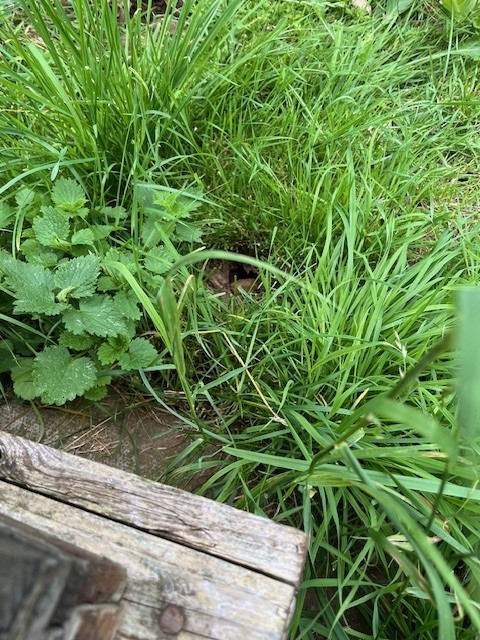
Honey:
Well those of us lucky enough to have a good crop by the end of the month with all the heat, the nectar will have been ripened into honey, is capped and ready for extraction.
But be careful if the bees find their way to the extraction room, you will be invaded as they try to recover their stores.
Always put wet supers back on the hives in the evening or you will cause real disruption in the Apiary as they try to find the source of the smell of ripe honey.
By the end of the month Water Balsam will be in full flower for any of you close to a river or other water source. The bees fly back looking like ‘ghosts’ covered in white pollen from the flowers.
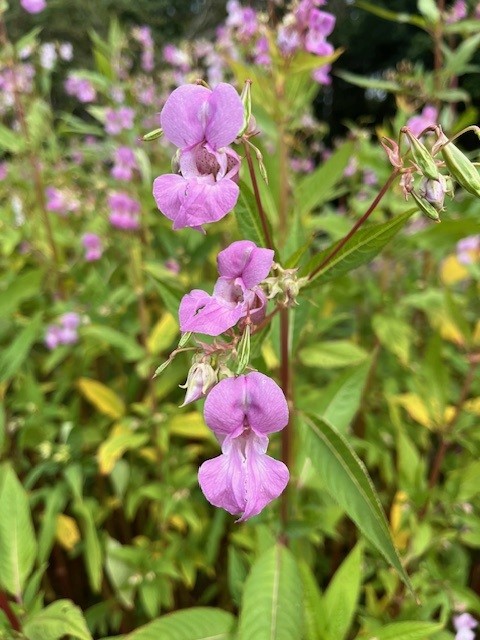

August honey all taken off, start to think about any needed Varroa treatment and how you prepare the strong colonies for winter and unite the weak ones.
Next Month: Then there are the wasps……

